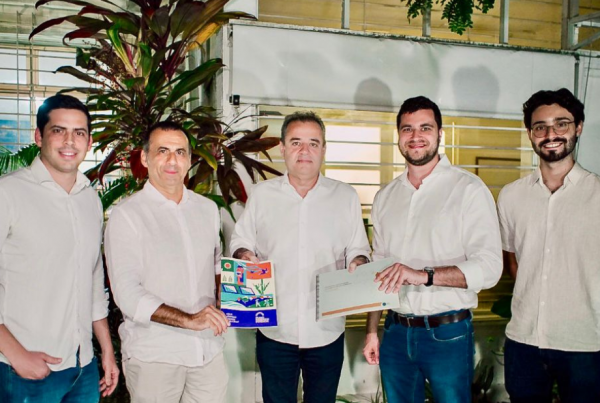Climate change assumes an increasingly dramatic urgency. In addition to what we see every day, alarming scientific studies follow each other pointing to worse scenarios than previously considered. The deadline is running out for humanity to keep global warming below the minimally safe limit of 2 degrees. A sharp reduction in global greenhouse gas (GHG) emissions is needed.
Two factors can help us in this regard. The first is that clean technologies have become available at low cost and on a large scale. Not only wind farms and solar panels, but also batteries, electric vehicles, biofuels, planted forests, and low-carbon agriculture. But the transition will require huge investments: more than a trillion dollars a year over the next decade in developing countries, where the best opportunities are to be found. It sounds like a huge amount, but it is only 5% of the GDP of Europe, which has just launched the Juncker Plan to invest $700 billion in its infrastructure within just five years. A similar plan to address climate change would bring far greater benefits to all.
The second factor is the gigantic mass of financial resources in the hands of pension funds, sovereign wealth funds, insurance companies, and private wealth managers looking for options to get out of increasingly risky and problematic fossil fuel assets. The global bond markets circulate 100 trillion dollars, and the investment markets 60 trillion. As the recent success of green bond issues shows, an increasing portion of this amount would be available to invest in sustainable low-carbon infrastructure, provided the risks are reduced.
There is a culture of risk aversion in this universe that presents investments with a large initial outlay (the upfront investment), a long maturity period, and slow returns, which seem less interesting in comparison with others, notably those of a more speculative nature. However, “mitigation actions” (which result in reduced, removed, or avoided GHG emissions) have an intrinsic “economic, social, and environmental value,” recognized in Paragraph 108 of the preamble of the Paris Agreement, the original text of which was submitted by Brazil.
How can these risks and the foreign exchange and political stability risks of the host countries be reduced? Public guarantees from industrialized countries that cover a portion of investment in low-carbon projects in developing countries can be an efficient instrument to leverage private capital (the typical multiplier effect is 12 to 15 times), at a much lower cost (spreads 2.5 to 3.5% lower) and with a much longer payback period (12 to 18 years).
The summit meeting called by President Emanuel Macron, which brought 127 countries to Paris on December 12, provided the opportunity for a first elementary step in this direction. Indeed, as part of the 5th new commitment made by the French government, “Moving away from the energies of the past and accelerating the development of renewable energies,” one of the points mentioned was “increasing the use of public guarantees to develop renewable energies in developing countries.” One way to realize this idea would be the establishment of a Club of Financial Initiatives to Address Global Climate Change, with more governments than France, central banks, development banks and multilateral agencies, sovereign wealth funds and institutional investors, willing to move forward in experimenting with new financing mechanisms based on the value of mitigation actions.
The next step would be to set up a Guarantee Fund to finance decarbonization projects in forestry, energy, transport, agriculture, etc. These partners, united, would have the collective task of putting on the table public guarantees capable of allowing AAA status for decarbonizing projects in countries where, under normal conditions, these would be prohibitive – among them Brazil. This would also provide an important contribution to the fulfillment of other international commitments made at the December 12 “One Planet Summit”: “Central bank and corporate action” (#9), “International mobilization of development banks” (#10), “Engagement of sovereign wealth funds” (#11), and “Mobilization of institutional investors” (#12).
The intrinsic economic value of mitigation actions would be expressed in public guarantees capable of leveraging much larger private sector resources, destined not only for the investments themselves but also for pre-investment, to prepare a pipeline of good projects, currently lacking: even if there were the desired availability of capital, there is currently – and not only in Brazil – a deficit of good projects that can be quickly executed.
This proposal was elaborated by an international network of proponents of new financing mechanisms with the participation of public managers, academics, and business and third sector cadres from Brazil, France, India, the US, and other countries, to be placed on the occasion of this Summit, whose characteristics allowed the launching of bolder and more daring ideas than the COPs of the UNFCCC, dependent on the consensus of 196 governments and on a dominant vision that still sees decarbonization financing from the viewpoint of North-South intergovernmental net transfers. It can be a small big step.
*Alfredo Sirkis is the executive director of the Brazil Center on Climate
*Emilio Lèbre La Rovere is a full professor at COPPE/UFRJ, author of reports for the IPCC and the Stiglitz-Stern Commission.
http://alfredosirkis.blogspot.com/2018/01/novos-instrumentos-financeiros-para.html




